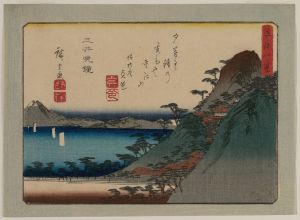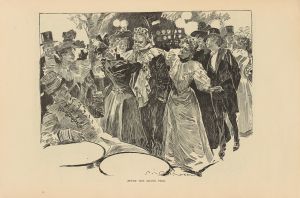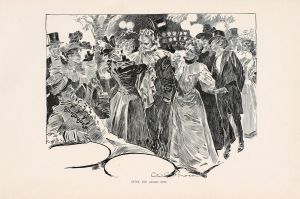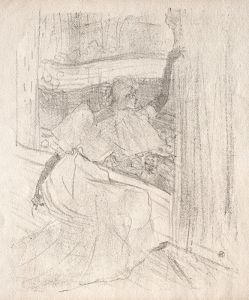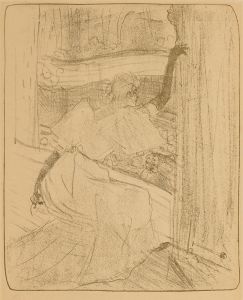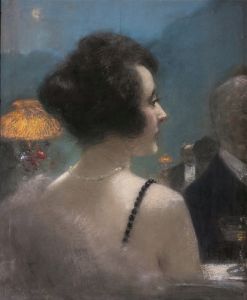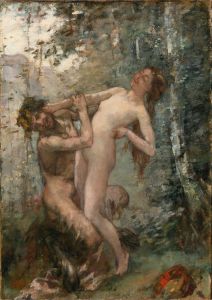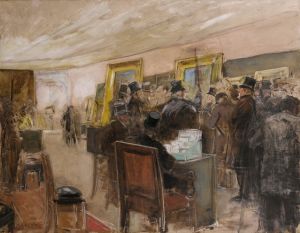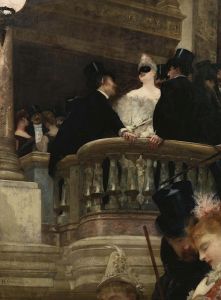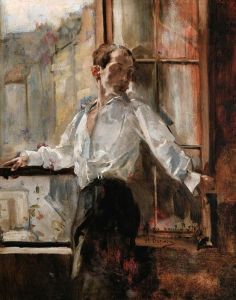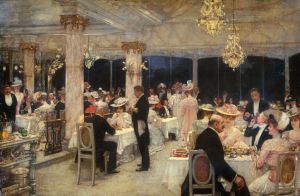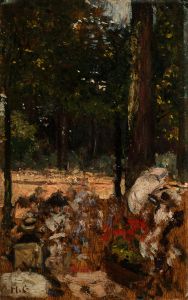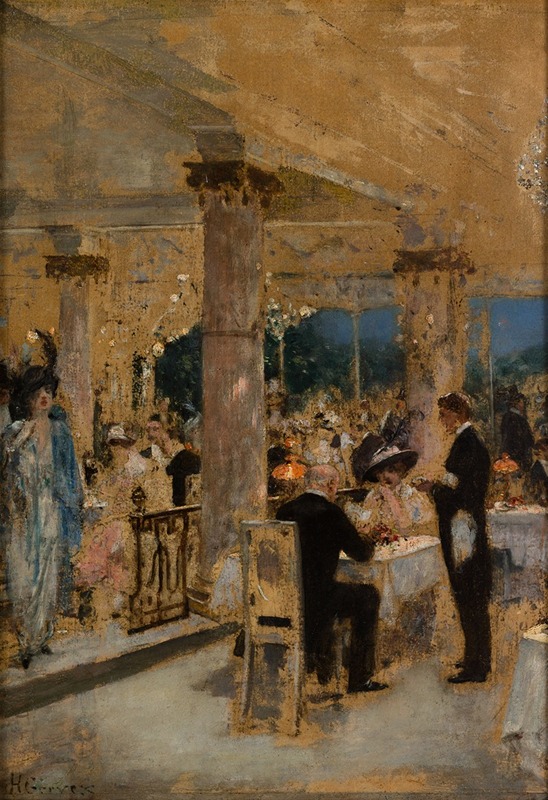
Armenonville, le soir du Grand-Prix
A hand-painted replica of Henri Gervex’s masterpiece Armenonville, le soir du Grand-Prix, meticulously crafted by professional artists to capture the true essence of the original. Each piece is created with museum-quality canvas and rare mineral pigments, carefully painted by experienced artists with delicate brushstrokes and rich, layered colors to perfectly recreate the texture of the original artwork. Unlike machine-printed reproductions, this hand-painted version brings the painting to life, infused with the artist’s emotions and skill in every stroke. Whether for personal collection or home decoration, it instantly elevates the artistic atmosphere of any space.
Henri Gervex's painting Armenonville, le soir du Grand-Prix is a notable work by the French artist, who was renowned for his contributions to late 19th-century and early 20th-century art. Gervex, born in 1852 and passing in 1929, was a prominent figure in the French art scene, known for his academic style and ability to capture the social and cultural life of his time. His works often depicted scenes of modern life, blending realism with a sense of elegance and sophistication.
The title of the painting, Armenonville, le soir du Grand-Prix, translates to "Armenonville, the Evening of the Grand Prix." It refers to the Pavillon d'Armenonville, a famous restaurant and social venue located in the Bois de Boulogne, a large park on the western edge of Paris. The Pavillon d'Armenonville was a popular gathering place for Parisian high society during the Belle Époque, particularly for events and celebrations. The "Grand Prix" mentioned in the title likely refers to the Grand Prix de Paris, a prestigious horse race held annually at the Longchamp Racecourse, also located in the Bois de Boulogne. This event was a highlight of the Parisian social calendar, attracting the elite and offering an opportunity for fashionable gatherings.
The painting captures the lively atmosphere of the Pavillon d'Armenonville on the evening of the Grand Prix, showcasing Gervex's skill in portraying the vibrancy and elegance of such occasions. His attention to detail and ability to depict the interplay of light and shadow contribute to the dynamic and festive mood of the scene. The work reflects the opulence and joie de vivre of the Belle Époque, a period marked by cultural flourishing and a sense of optimism in France.
While specific details about the painting's creation, dimensions, or current location are not widely documented, it remains an example of Gervex's talent for chronicling the social life of his era. His works, including this painting, provide valuable insights into the customs, fashion, and leisure activities of late 19th-century Parisian society.





